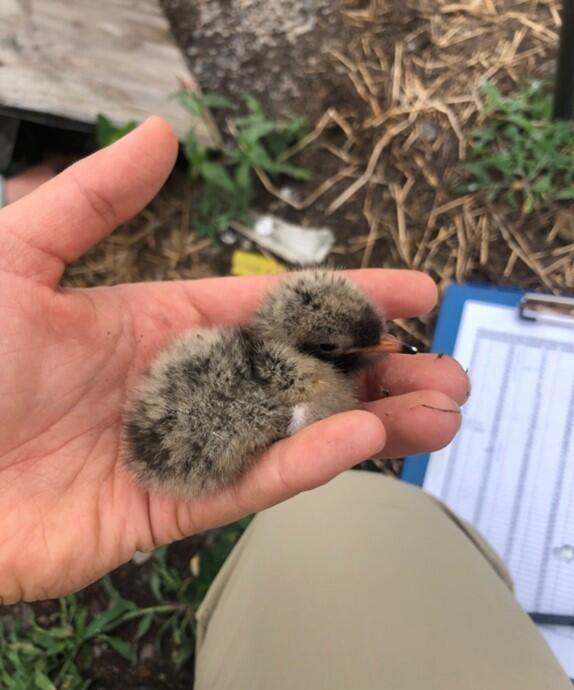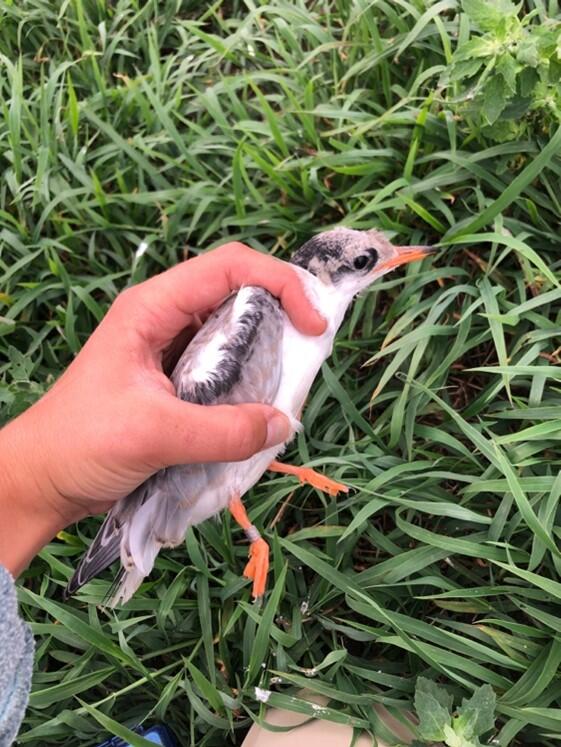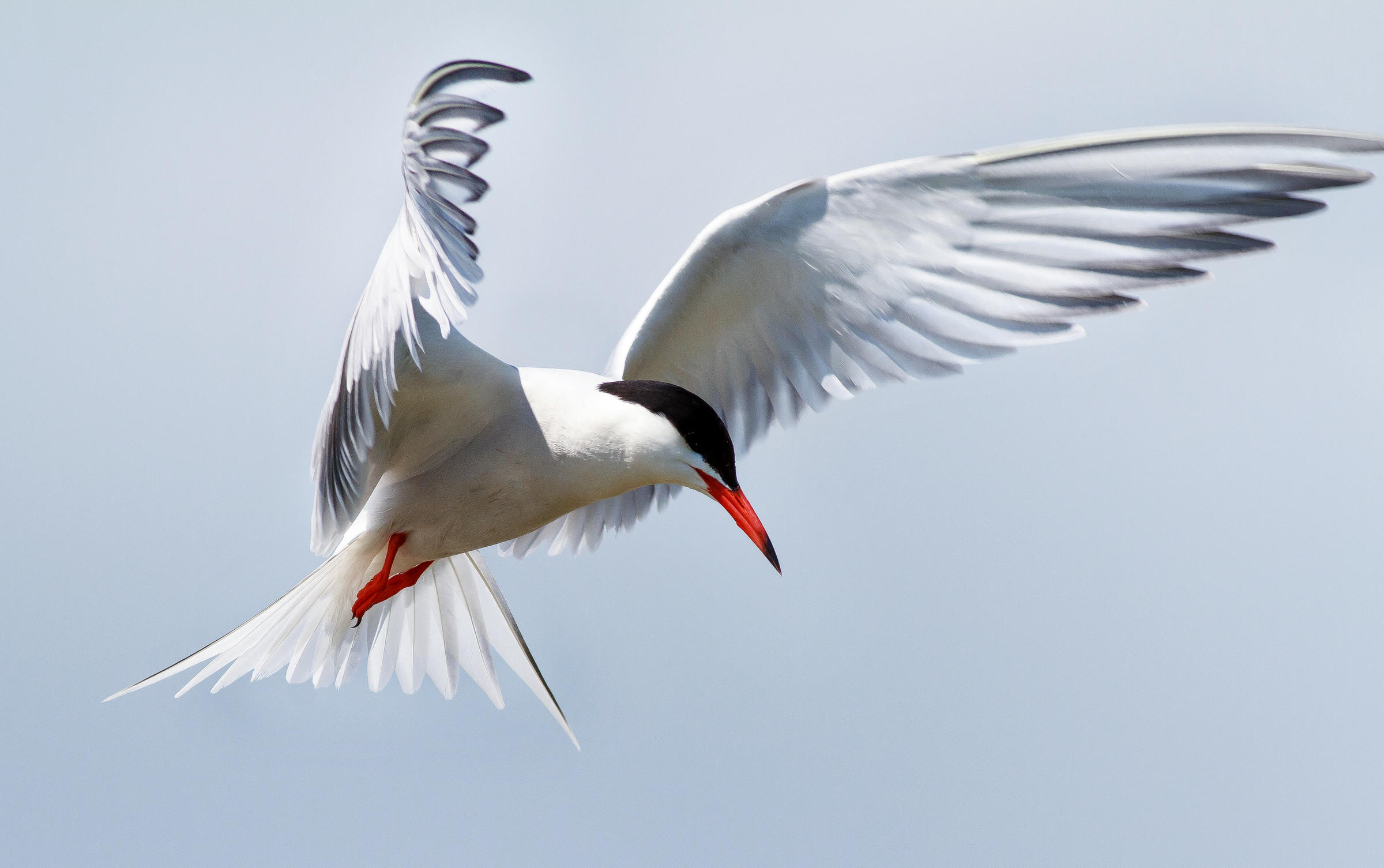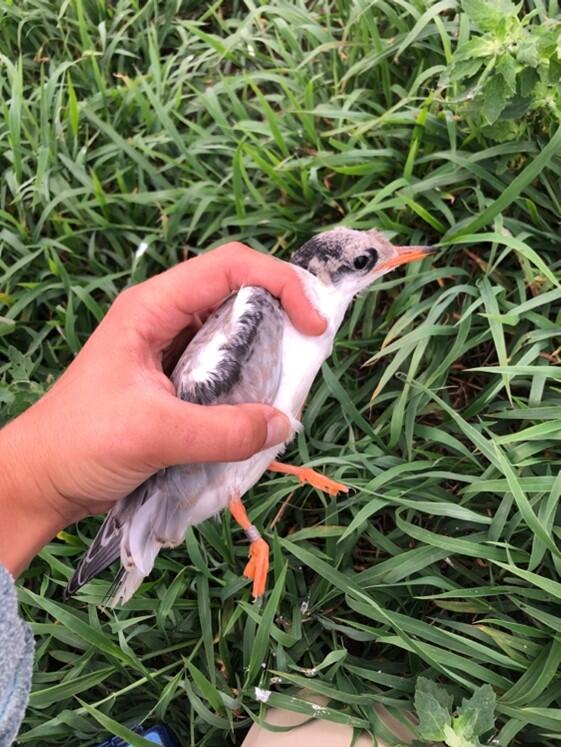It’s late May, and I’m standing on a boat docked in North Hero about to make my first visit to Vermont’s only Common Tern colony. Conservation program manager Mark LaBarr passes me a life jacket and asks, “wanna drive?” With just the two of us in the boat its important that I know how to operate it.
At this point in the season, the birds are just beginning to mate. As we approach Popasquash Island, we are lucky enough to witness their courtship rituals– one being a mating display in which the terns fly together over the water, twisting and turning in an intricate dance. The terns also engage in courtship feeding, a ritual where the male terns bring fish to the females. As socially monogamous birds, these courtship rituals help solidify the pair bond. We land on the island to see that some pairs had already laid eggs, so we begin tagging the nests; we’ll visit the islands each week to check on these nests and monitor for predation, abandonment, or hatching activity.
Two weeks later, nesting is in full swing. Now when we approach Popasquash, a cloud of white erupts into the air as the Common Terns and Ring-billed Gulls take flight and come to greet us on the water – or rather, to warn us. Despite being colony nesters, terns are quite territorial; so much so that hard hats are required to endure the dive-bombing birds attempting to shoo us away from their nests. “Tweezers with wings,” Mark affectionately calls them. We land on the island and to my delight, we spot the first chicks of the year! I hold them while Mark prepares to band them, and one regurgitates its last meal into my hand. They never said the job was glamorous.

We band the chicks as part of the Common Tern Recovery Project, a collaboration between Audubon Vermont and Vermont Fish & Wildlife that began in 1988 when tern numbers dipped to just 50 pairs. This year, we estimated 180 breeding pairs across Popasquash and Rock Islands, so it’s safe to say the project is working. Each week when we visit the island, we search through vegetation and peer into the rock crevices along the edges of the island that the chicks like to hide in. When we find a chick, we’d either put a band on its leg, or we record the band number if it already had one. This helps us keep track of who’s who, and ultimately will help us determine how many of the chicks make it into adulthood. We banded a total of 203 chicks this season!
Common Tern chicks fledge in about 21 days, meaning they trade in their natal down for a black cap and some flight feathers, and get ready to take to the sky. This also means that we have a pretty short window for resighting the chicks, as a two-week-old chick may have left the nest by the next time we get out to the island. Trying to wrangle the chicks is a skill; as they get older and more mobile, they’ll all huddle together on the edges of the island. Catching them requires equal parts stealth and speed. Despite the challenges of recapturing the chicks, we were able to determine that 119 chicks fledged from both Popasquash and Rock Islands. With limited evidence of predation on Popasquash, it is safe to assume that many other chicks we banded survived to adulthood and fledged before we were able to catch them again. They grow up so fast!

Over at Rock Island in St. Albans Bay, things are not as hectic. We observed significantly fewer nesting pairs than at Popasquash, and several cracked eggs and abandoned nests suggest that the island may have been experiencing predation. We observed Black-crowned Night Herons at a neighboring island earlier in the season and reckon they could be the culprits. Mark devises a plan to install solar-powered motion-sensor lights around the nests to ward off any visitors that may come looking for a meal in the night. In the weeks following the light installation, we see start seeing more and more nests cropping up. Then, towards the end of July, we see Rock Island’s first chick! Though Rock didn’t end up being nearly as productive as Popasquash, it felt like a win knowing we helped get a few chicks off the island.
Now when we the visit the islands, it’s a much more peaceful endeavor. Most birds have left the island to go fish in other ponds, getting ready for migration. Come the Fall, the baby birds I once held in my hands will travel all the way to Central or South America, maybe as far as Argentina, where they’ll stay until they reach 2 years old. Then, they’ll make the long voyage back up to Vermont, where they’ll breed at the very island they were born, under the close care of the Common Tern Recovery Project.







